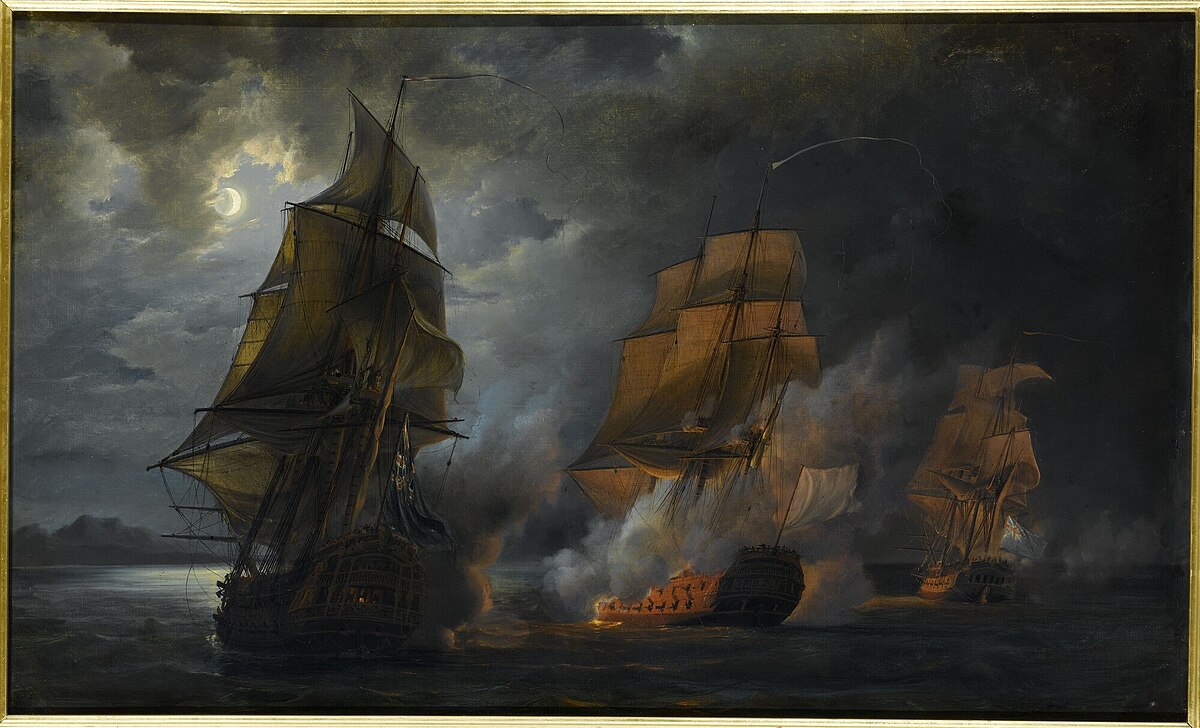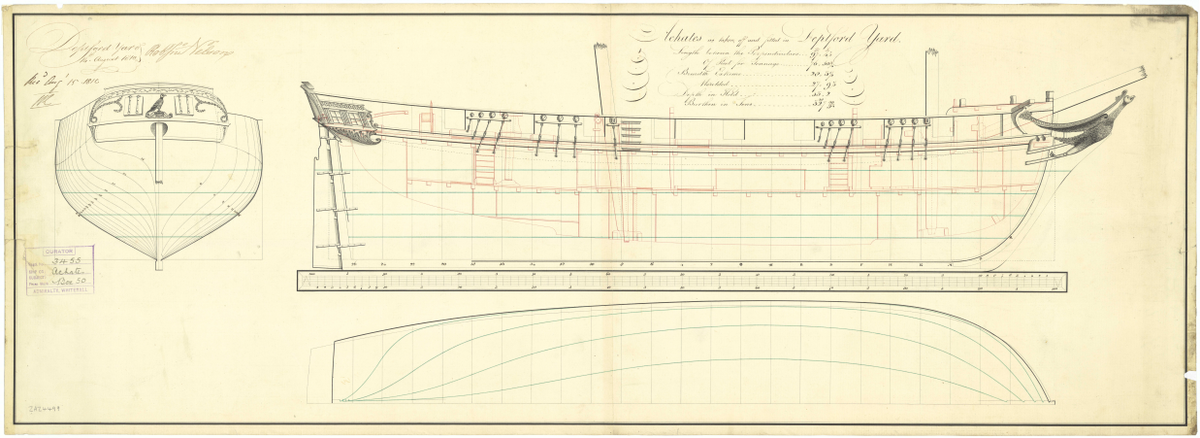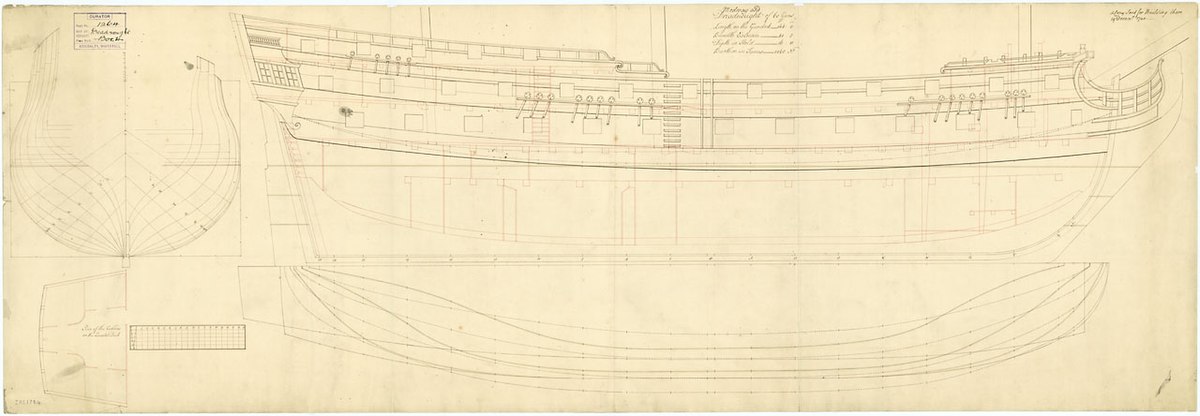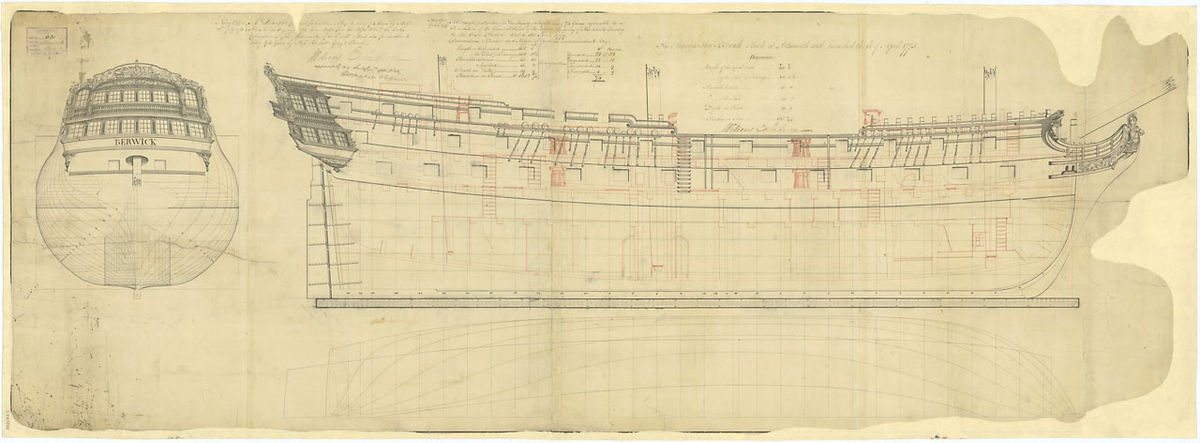Today in Naval History - Naval / Maritime Events in History
20th of October
some of the events you will find here,
please use the following link where you will find more details and all other events of this day .....
1401 – Death of Klaus Störtebeker, German pirate

1720 – Caribbean pirate Calico Jack is captured by the Royal Navy.
The Capture of the sloop William refers to a small single ship action fought between Calico Jack's pirate ship and a British sloop-of-war from Port Royal, Jamaica. The battle was fought in Dry Harbor Bay, and ended with the capture of the famed pirate and his small crew of which several were hanged later on as a warning to other brigands.

1744 - HMS Bonetta (14), HMS Greenwich (54), Cptn. Edward Allen, HMS St. Albans (54), HMS Thunder bomb (8) and HMS Lark hulk (42) foundered off Jamaica during hurricane.
1778 - HMS Jupiter (50), Cptn. Francis Reynolds, and HMS Medea (28), Capt. James Montagu, engaged a French ship of the line Triton in the Bay of Biscay.
The Action of 20 October 1778 was an inconclusive engagement between French ship-of-the-line Triton and British ship-of-the-line Jupiter with a frigate Medea that took place off Cape Finisterre in the Bay of Biscay. Darkness separated the combatants before any decisive result was obtained.



1793 - HMS Crescent (36), Cptn. James Saumarez, engaged French frigate Reunion with a cutter, Esperance (14) in company. Reunion was taken but Esperance escaped into Cherbourg.

1798 - HMS Fisgard (44) captured Immorlalite.

1799 - HMS Cerberus (32) engaged five Spanish frigates.
1806 - HMS Athenienne (64), Cptn. Robert Raynsford, wrecked on the Esquerques, off Sicily.
HMS Athenienne was a 64-gun third-rate ship of the line of the Royal Navy. She was the former Maltese ship San Giovanni, which the French captured on the stocks in 1798 and launched and commissioned as Athénien. The Royal Navy captured her at or prior to the surrender of Valletta, on 4 September 1800, and took her into service as Athenienne. She was wrecked near Sicily, with great loss of life, in 1806.

1808 - 21 Danish gunboats, under Cptn. Johan C. Krieger, attacks a British convoy in the southern part of the Sound. The convoy consisting of 137 ships is escorted by HMS Africa (64), Cptn. John Barrett, HMS Thunder bomb, James Caulfield, and 2 brigs. Due to lack of wind Africa could not manouvere and was severely damaged.
1813 - HMS Achates (16), Isaac Morrison, engaged Trave off Cape Finisterre.

1824 - U.S. Schooner Porpoise captures four pirate ships off Cuba.
1827 - Battle of Navarino. A combined Turkish and Egyptian armada, under Ibrahim Pasha, was destroyed by an allied British, French, and Russian naval force, under Edward Codrington

1864 - A boat expedition under Acting Master George E. Hill, with the screw steam gunboat Stars and Stripes, ascends the Ochlockonee River in Western Florida and destroys an extensive Confederate fishery on Marshs Island, capturing a detachment of soldiers assigned to guard the works.
1910 – The hull of the RMS Olympic, sister-ship to the ill-fated RMS Titanic, is launched from the Harland and Wolff shipyard in Belfast.


1941 - USS Hornet (CV 8) is commissioned. During World War II, she participates in the Doolittle Raid on Japan, the Battle of Midway, and the Solomon Campaign. On Oct. 26, 1942, at the Battle of Santa Cruz Islands, Hornet is severely damaged by the Japanese enemy and abandoned. Though U.S. destroyers attempt to scuttle her, Hornet remained afloat and was sunk by Japanese destroyers early the next morning.
1943 - Torpedo bombers (TBF Avengers) from Composite Squadron (VC) 13, then based on board the escort carrier USS Core (CVE 13), sink the German submarine U-378 north of the Azores.
1944 - The U.S. Navy lands four Sixth Army divisions ashore on Leyte. Japanese aerial counter-attacks damage escort carrier Sangamon and a few other ships, but do not hinder the landings. Later in the day, Gen. Douglas MacArthur gives his "I have returned" radio message to the Philippine people. If Leyte is lost, the rest of the
Philippines will soon follow, so the Japanese prepare to send five strong naval forces to drive off the American fleet and add more troops for the land fighting. In the following days, this response will lead to World War II's biggest and most complex sea fight, the multi-pronged Battle of Leyte Gulf.
1976 – The ferry George Prince is struck by a ship while crossing the Mississippi River. Seventy-eight passengers and crew die, and only 18 people aboard the ferry survive.
20th of October
some of the events you will find here,
please use the following link where you will find more details and all other events of this day .....
Naval/Maritime History - 14th of May - Today in Naval History - Naval / Maritime Events in History
Today in Naval History - Naval / Maritime Events in History 4th of October please use the following link and you will find the details and all events of this day ...
shipsofscale.com
1401 – Death of Klaus Störtebeker, German pirate

1720 – Caribbean pirate Calico Jack is captured by the Royal Navy.
The Capture of the sloop William refers to a small single ship action fought between Calico Jack's pirate ship and a British sloop-of-war from Port Royal, Jamaica. The battle was fought in Dry Harbor Bay, and ended with the capture of the famed pirate and his small crew of which several were hanged later on as a warning to other brigands.

1744 - HMS Bonetta (14), HMS Greenwich (54), Cptn. Edward Allen, HMS St. Albans (54), HMS Thunder bomb (8) and HMS Lark hulk (42) foundered off Jamaica during hurricane.
1778 - HMS Jupiter (50), Cptn. Francis Reynolds, and HMS Medea (28), Capt. James Montagu, engaged a French ship of the line Triton in the Bay of Biscay.
The Action of 20 October 1778 was an inconclusive engagement between French ship-of-the-line Triton and British ship-of-the-line Jupiter with a frigate Medea that took place off Cape Finisterre in the Bay of Biscay. Darkness separated the combatants before any decisive result was obtained.


1793 - HMS Crescent (36), Cptn. James Saumarez, engaged French frigate Reunion with a cutter, Esperance (14) in company. Reunion was taken but Esperance escaped into Cherbourg.
1798 - HMS Fisgard (44) captured Immorlalite.
1799 - HMS Cerberus (32) engaged five Spanish frigates.
1806 - HMS Athenienne (64), Cptn. Robert Raynsford, wrecked on the Esquerques, off Sicily.
HMS Athenienne was a 64-gun third-rate ship of the line of the Royal Navy. She was the former Maltese ship San Giovanni, which the French captured on the stocks in 1798 and launched and commissioned as Athénien. The Royal Navy captured her at or prior to the surrender of Valletta, on 4 September 1800, and took her into service as Athenienne. She was wrecked near Sicily, with great loss of life, in 1806.
1808 - 21 Danish gunboats, under Cptn. Johan C. Krieger, attacks a British convoy in the southern part of the Sound. The convoy consisting of 137 ships is escorted by HMS Africa (64), Cptn. John Barrett, HMS Thunder bomb, James Caulfield, and 2 brigs. Due to lack of wind Africa could not manouvere and was severely damaged.
1813 - HMS Achates (16), Isaac Morrison, engaged Trave off Cape Finisterre.

1824 - U.S. Schooner Porpoise captures four pirate ships off Cuba.
1827 - Battle of Navarino. A combined Turkish and Egyptian armada, under Ibrahim Pasha, was destroyed by an allied British, French, and Russian naval force, under Edward Codrington
1864 - A boat expedition under Acting Master George E. Hill, with the screw steam gunboat Stars and Stripes, ascends the Ochlockonee River in Western Florida and destroys an extensive Confederate fishery on Marshs Island, capturing a detachment of soldiers assigned to guard the works.
1910 – The hull of the RMS Olympic, sister-ship to the ill-fated RMS Titanic, is launched from the Harland and Wolff shipyard in Belfast.

1941 - USS Hornet (CV 8) is commissioned. During World War II, she participates in the Doolittle Raid on Japan, the Battle of Midway, and the Solomon Campaign. On Oct. 26, 1942, at the Battle of Santa Cruz Islands, Hornet is severely damaged by the Japanese enemy and abandoned. Though U.S. destroyers attempt to scuttle her, Hornet remained afloat and was sunk by Japanese destroyers early the next morning.
1943 - Torpedo bombers (TBF Avengers) from Composite Squadron (VC) 13, then based on board the escort carrier USS Core (CVE 13), sink the German submarine U-378 north of the Azores.
1944 - The U.S. Navy lands four Sixth Army divisions ashore on Leyte. Japanese aerial counter-attacks damage escort carrier Sangamon and a few other ships, but do not hinder the landings. Later in the day, Gen. Douglas MacArthur gives his "I have returned" radio message to the Philippine people. If Leyte is lost, the rest of the
Philippines will soon follow, so the Japanese prepare to send five strong naval forces to drive off the American fleet and add more troops for the land fighting. In the following days, this response will lead to World War II's biggest and most complex sea fight, the multi-pronged Battle of Leyte Gulf.
1976 – The ferry George Prince is struck by a ship while crossing the Mississippi River. Seventy-eight passengers and crew die, and only 18 people aboard the ferry survive.



















